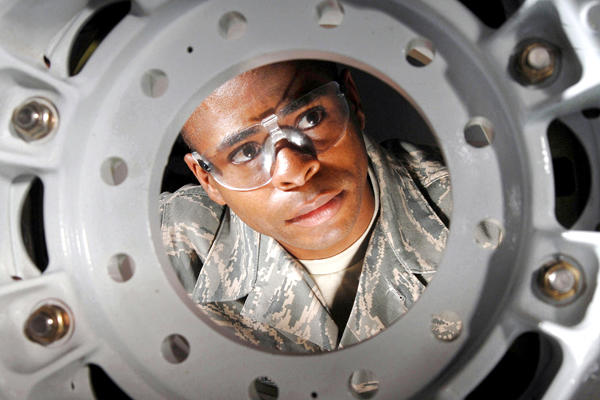If the fluid level in your master cylinder remains full, chances are that you don't need to check for leaks in the brake lines that carry the fluid to each wheel cylinder. However, if you find that you're losing brake fluid, or if the inner surfaces of your tires are wet or look as though something has been leaking and streaking them, it could be a leak in the wheel cylinders or the brake lines — or a visit from a neighbor's dog!
The easiest way to check brake lines is to put the vehicle up on a hydraulic hoist, raise it over your head, walk under it, and examine the lines as they lead from the hood area to each wheel. Leaks may be coming from holes in the lines where the steel lines become rubber ones or where the brake lines connect with the wheel cylinders.
Tip: If you don't have access to a hoist at the auto repair class at your local school or at a friendly garage, you have to jack up your vehicle, one end at a time, and get down on the ground with a flashlight or work light to look at your lines.
To check your brake lines, do the following:
- Check carefully along the brake lines for wetness and for streaks of dried fluid.
- If you see rust spots on your lines, gently sand them off and look for thin places under those spots that may turn into holes before long.
- Feel the rubber parts of the brake lines for signs that the rubber is becoming sticky, soft, spongy, or worn.
Tip: Your brake lines should last the life of your vehicle. If they look very bad, have a professional take a look at them and tell you whether they should be replaced. If the vehicle is fairly new and the brake lines look very bad, go back to the dealership and ask them to replace the lines free of charge.
- Look at the inner surfaces of your tires for drippy clues about leakingwheel cylinders.
From Auto Repair for Dummies, copyright © 2009 by Wiley Publishing, Inc., Indianapolis, Indiana. Used by arrangement with John Wiley & Sons, Inc.






